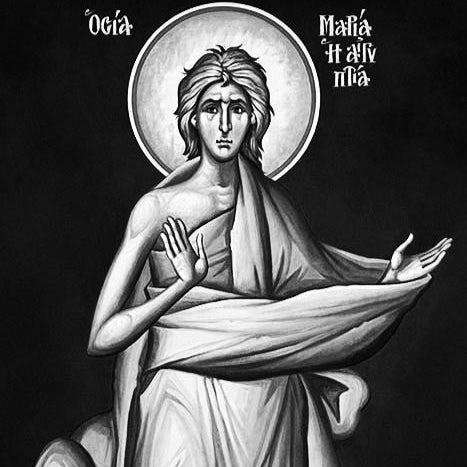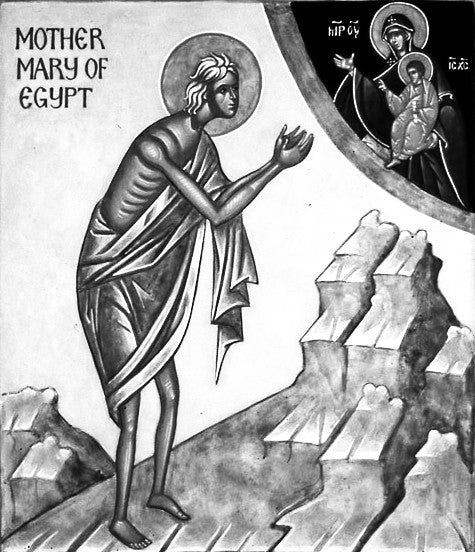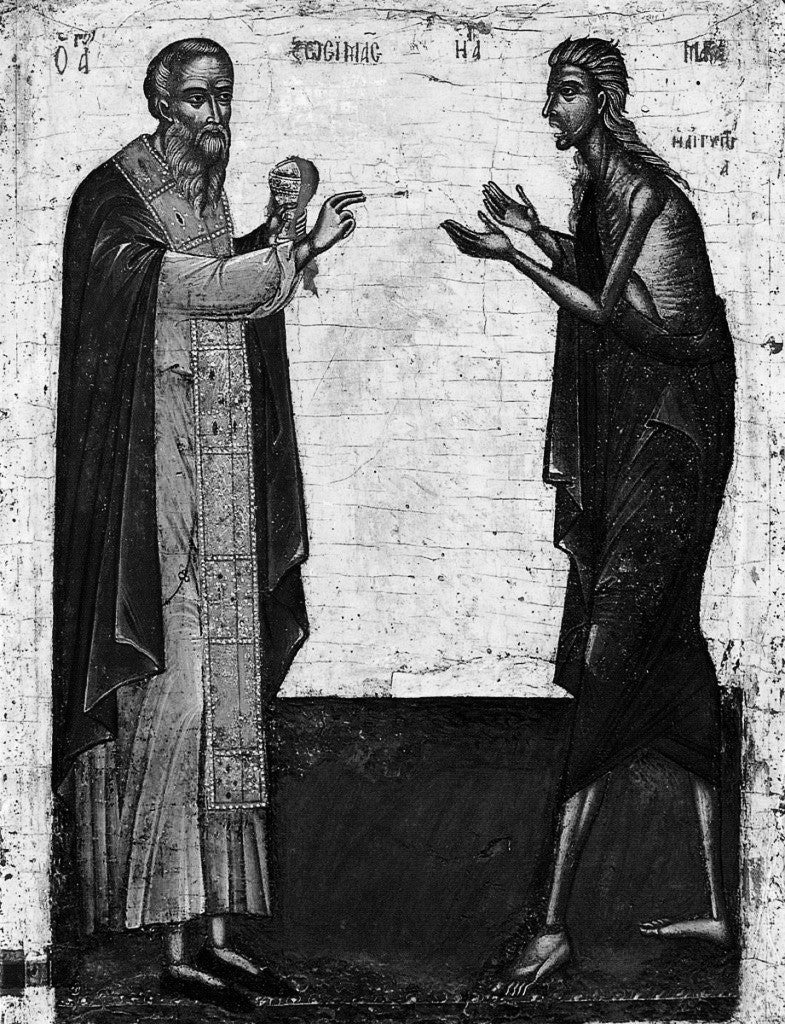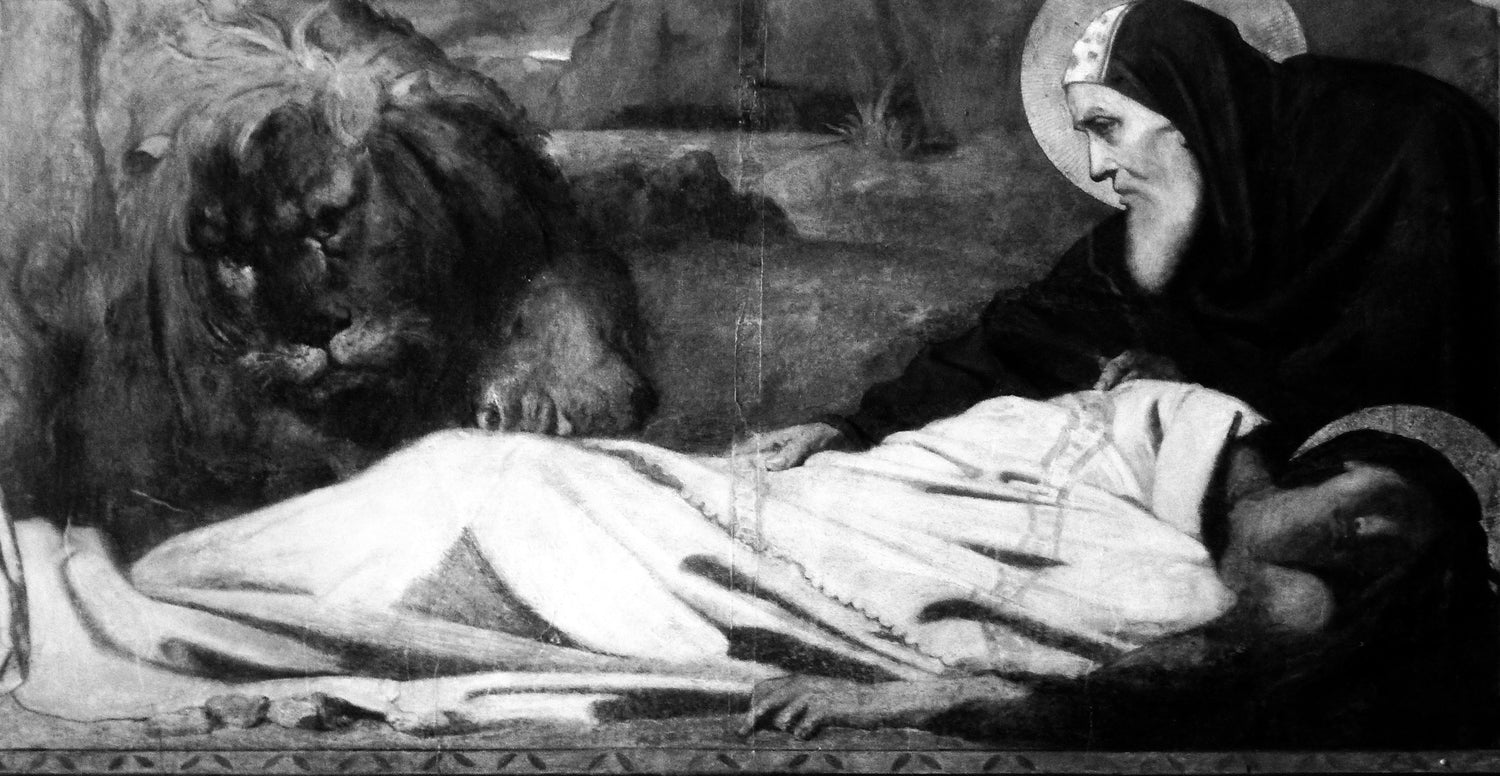SAINT MARY OF EGYPT
An example of repentance and spiritual transformation

April 14, according to the Orthodox liturgical calendar, marks the commemoration of Saint Mary of Egypt, an emblematic figure of repentance and spiritual transformation. Her journey, although dating back to the 5th century, remains a timeless source of inspiration, illustrating the power of divine mercy and the ability of the human soul to reorient itself toward the light, even after experiencing the deepest darkness.
From Debauchery to Holiness
Born in Egypt, Mary left home at the age of 12 to settle in Alexandria. For seventeen years, she led a life of debauchery, indulging in carnal pleasures and living in luxury. According to hagiographic accounts, she did not seek to enrich herself through her activities, but was driven by an insatiable desire for carnal pleasures. Hearing of a group of pilgrims traveling to Jerusalem for the Feast of the Exaltation of the Holy Cross, she decided to follow them. Unable to pay for her passage, she offered her favors to the sailors in exchange for the journey, thus continuing her dissolute lifestyle even en route to the Holy City.
Arriving in Jerusalem, she attempted to enter the Church of the Holy Sepulchre to attend the celebrations. However, an invisible force repeatedly prevented her from crossing the threshold. Realizing the gravity of her sins, she turned to an icon of the Virgin Mary and implored her intercession. After promising to change her life, she finally managed to enter the church and venerate the precious Cross. This moment marked the beginning of her profound conversion.

A Life of Asceticism in the Desert
True to her promise, Mary withdrew beyond the Jordan into the desert to lead a life of asceticism and prayer. For forty-seven years, she lived as a hermit, enduring the harshness of the desert, battling temptations, and devoting herself entirely to God. The early years were particularly trying: she faced extreme weather conditions, intense temptations stemming from her old habits, and profound loneliness. Despite these challenges, Mary persevered, finding in prayer and meditation the strength to overcome the trials. Her body grew emaciated, her skin hardened from the sun, and her clothes crumbled, leaving her naked, covered only by her long hair. This austere existence, far from the world, allowed her to purify herself spiritually and draw closer to God.

Meetings with Monk Zosima
Toward the end of her life, after spending forty-seven years in the desert, Mary crossed paths with the monk Zosimas of Palestine. Zosimas, renowned for his piety, had withdrawn to the desert during Lent to fast and meditate. When he saw Mary, he was initially surprised by her appearance: a naked woman, her body marked by the harshness of the desert, with white hair falling to her shoulders. Out of respect, he offered her his cloak so she could cover herself. Mary then told him her story, confessing her sinful past and describing her life of asceticism. Touched by her story and recognizing her holiness, Zosimas administered Holy Communion to her. They agreed to meet again the following year at the same place.
When the day came, Zosimas went to the appointed place and saw Mary crossing the Jordan River, walking on the waters to join him. After receiving communion, she asked him to meet again the following year at the place of their first meeting. When Zosimas returned the following year, he discovered Mary's lifeless body, lying on the ground, her arms crossed and her face turned toward the east. Near her head, an inscription indicated that she had died on the very evening she had received communion the previous year. Zosimas, unable to dig her grave alone, saw a lion appear and help him dig the pit to bury her.

Saint Mary of Egypt and Holy Shadows
At Holy Shadows, we draw inspiration from figures such as Saint Mary of Egypt. Her journey from the darkness of sin to the light of holiness perfectly embodies the concept of “Holy Shadows.” She reminds us that, even in our darkest moments, divine light can transform us and guide us toward redemption. That’s why we chose to launch our brand on April 14, her commemoration day in the Orthodox liturgical calendar, in tribute to her shining example of repentance and spiritual renewal.
To Deepen
For those interested in learning more about the life and legacy of Saint Mary of Egypt, we recommend the following documentary: